
Sleep is an important part of our lives. We roughly spend approximately a third of our lives sleeping. This just shows how much impact the quality of sleep that we receive influences our lifestyle.
Research has shown that not getting a good amount of quality rest affects us health-wise, psychologically and socially. Not only do we fail to perform our at most during the day but we are also likely to suffer from mental illnesses like depression among others.
Our interest in reviewing mattresses came out of a shared challenge, finding the right one. In this article, we offer a buyer’s guide for mattress shopping this year.
We must appreciate the quality of bedding available on the market today. In the recent years, companies in the sleep industry have dedicated to manufacturing high-quality mattresses. Therefore, there’s variety to choose from.
There are different reasons why you’d want new bedding. But whatever the reason, it’s essential to know what you’ll be looking for. There are so many brands, understand your needs and preferences before settling on one. It’s a long-term investment unless you’re buying for short-term use. Pick one that complements those needs.
5 Signs That You Need a New Mattress

Ideally, you’re supposed to change your bedding every 8 years. But there are other reasons why you would want a new one. We have focused on some 5 significant signs that tell you it’s time to go shopping.
Back Pain
A lousy mattress will give you back pain, and this is regardless of whether it’s new or old.
So how can you tell that your bed is the culprit behind your back pain?
- It’s simple, look at the times that you experience the pain. Mostly, it will be in the night as you’re sleeping and in the morning when you wake up. As you relax, should you find yourself tossing and turning with some discomfort in your lower back, then it’s time to change that.
- Sometimes, you’ll find that when waking up in the morning there’s some back pain which goes away about an hour after waking up. You’ll probably do some stretching, and your back will feel okay.
These are examples of circumstances which indicate your bed isn’t doing you any good. Back pain could be as a result of numerous reasons, and it’s important to find out the exact cause of your backache.
Both new and old bedding has the same potential to cause a backache, and here’s why:
Old: An old bedding doesn’t offer the same comfortable and sleeping surface it once did. Over time it loses the firmness and creates discomfort. It starts to sag – the next section focuses on sagginess. The sagging is what leads to back pain.
New: There are very many brands available in the market today. Should it happen that you select one that doesn’t suit you, you’ll start having complications such as a backache.
The point is, whether it’s a new or old mattress, the moment you realize that it is causing you back pain then it’s a sign that it’s time to go shopping!
See our top most recommended mattresses for those who experience lower back pain discomfort.
Sagginess
Although they say that you can reduce sagging in your mattress, it eventually does sag. There are various reasons why mattresses sag, and they include:
- Old age – If you’ve used your bed for an extended period, its structure weakens and it losses it’s stability causing it to sag.
- The material used – Some of the materials used in construction may not be strong enough, and therefore after sleeping on for a while, they begin to sag. It’s among the primary weakness in some memory foam beds.
- Spilling liquids – This is primarily a challenge with foam constructed bedding. When you spill liquids, they tend to start sagging. Some beds come with waterproof protectors to prevent the fluid from penetrating inside.
Luckily, there are brands which don’t sink as much and will only do so as a result of old age.
Why is sagginess a reason to get a new mattress?
Sagginess causes a mattress to lose its shape. That means the surface will not offer the right amount of comfort needed to enjoy quality sleep. You’ll find yourself turning a lot and taking time to adjust to sleeping postures.
Because of pressure created from uneven distribution of your weight, you’ll develop soreness on different spots of your body such as the neck, back, and shoulders.
Therefore, the moment you see or feel that your bed has started sagging, you should start thinking of a new one. Sagging affects the quality of sleep that you get, which in turn affects your health and overall wellbeing.
Restlessness
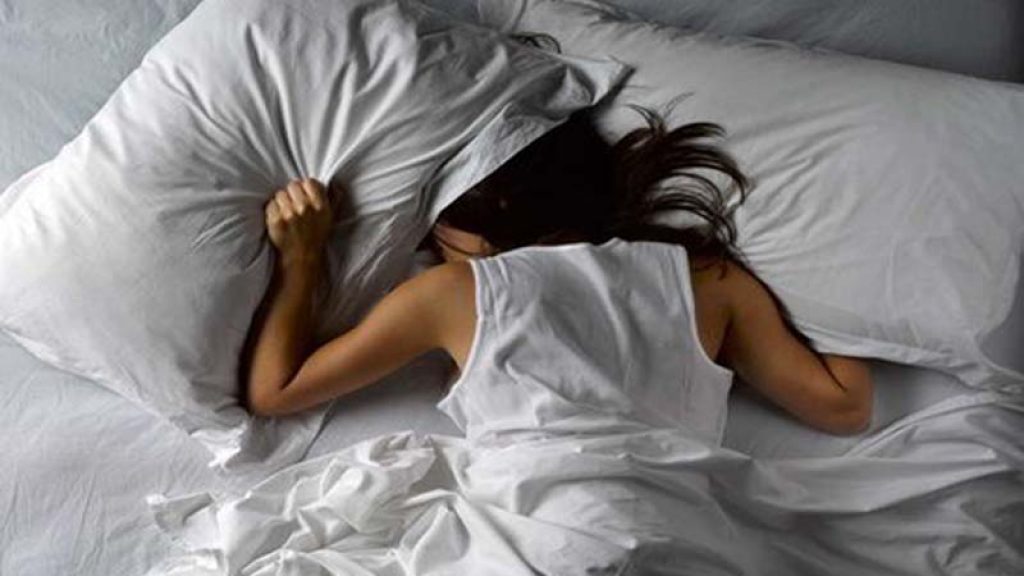
Quite frankly, what’s the point of going to bed if you’re only going to toss and turn?
You go to bed because you’re looking to enjoy some quality rest after a long day. It’s sad when achieving that becomes a problem. Well, it’s not just your sleep that will be affected.
Restlessness when trying to catch some sleep can be a nuisance. And although there are several reasons why you would be restless in your sleep, our focus is on the mattress.
Numerous factors can make your mattress get you restless such as:
- The firmness level may not compliment your sleeping style
- It has developed some sagging – as discussed in the previous section
- It’s not as receptive – Takes time to adjust when you change positions
- It causes you to have sore spots
- It gets hot as you sleep
- You’re allergic to the materials used in construction
Restlessness is a problem that comes about because the mattress doesn’t or no longer complements your sleeping needs and preferences. It will be difficult to ignore the discomfort, and you’ll be forced to purchase a new bed.
What if you’re a restless sleeper?
Restless sleepers tend to be light sleepers, which means any sudden movements is likely to wake them up. For individuals, it may not be much of a problem, but for those sharing, it’s a significant issue.
A bed with minimal or zero motion transfer is ideal under such circumstances. If you’re sharing, consider getting such bedding.
Sleeps Hot
Among the primary qualities that we look for when reviewing mattresses is how hot or cold they sleep. To score high, brands have invested in cooling features to enhance the performance of their beds.
A good sleeping surface should remain at optimum temperature whenever you’re resting. That means that it shouldn’t get too hot or cold that it disrupts your sleep. It can affect the quality of sleep that you get to enjoy.
A mattress can sleep hot for various reasons such as:
- The material used in its design. This is especially a problem with foam as it has been known to get hot as you sleep, though, not all foams have this shortcoming.
- It’s old. A bed that has served its purpose long enough stops being efficient – that means it will not conduct as much heat away as it once did.
- Pressure spots. Pressure spots form because the surface doesn’t offer comfort. Because of uneven weight distribution, you’ll find that some regions develop high pressure which becomes hot spots, forcing you to sleep warm.
There’s no evading making a purchase when your mattress starts sleeping hot. There’s little you can do to minimize the problem. Sometimes, reducing the room temperature, not using blankets, sheets or sleeping with little or no clothing might not suffice to solve the problem.
That’s why the moment you start being hot at night, then you know it’s a sign to start investing in a new mattress. You could also be sleeping hot because of an illness or other factors so be sure it’s the bed before making a change.
Bed Bugs
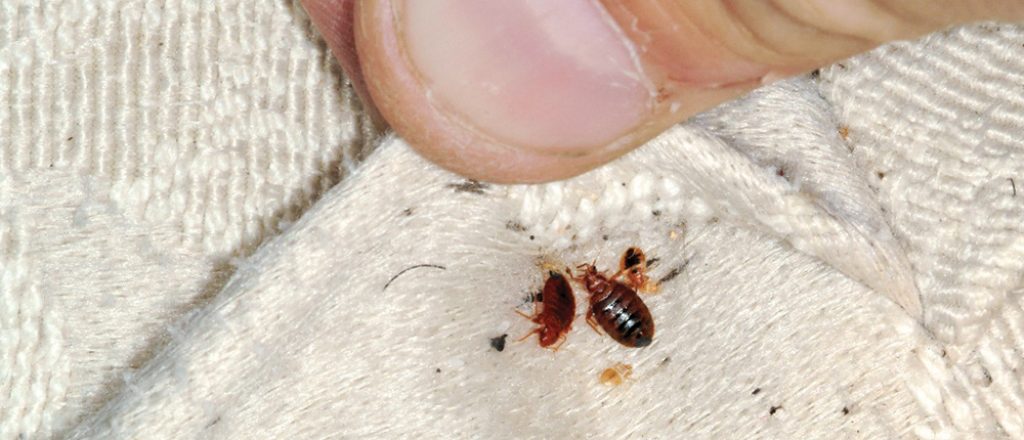
They may be small, but these bugs can adversely affect your sleep. How can you tell that your bed is infested with bugs?
- You see a bug
- You have strange bites on your skin when you wake up which weren’t there when you went to sleep
- There are bug fecal matter stains on the mattress
There are ways you can remove the bugs if you’re comfortable sleeping on a once infested surface. However, at times, the mattress may be too infested to continue using. During such situations, there’s no denying that a new mattress will be necessary.
In case it was old bedding, or it isn’t as comfortable to sleep on, then getting rid of it will not be a problem. But if it was a new mattress, you may have to employ strategies to get rid of the bugs. They include;
- There are home remedies or pesticides you can use.
- You can get a mattress protector – that’s before it gets infested. Some protectors are also hypo allergic which is a bonus.
It’s vital to point out that should you chose to dispose of the mattress, ensure that you do it correctly.
First, the bugs will probably be in more than one place or room in the house, therefore, as you dispose of the mattress, ensure that the rest of the house is also checked for bugs. Just getting a new mattress doesn’t really solve the problem.
Secondly, dispose the mattress far away from the house. They’ll go back to disturbing you should you leave it lying around carelessly.
What Type of Sleeper Are You?
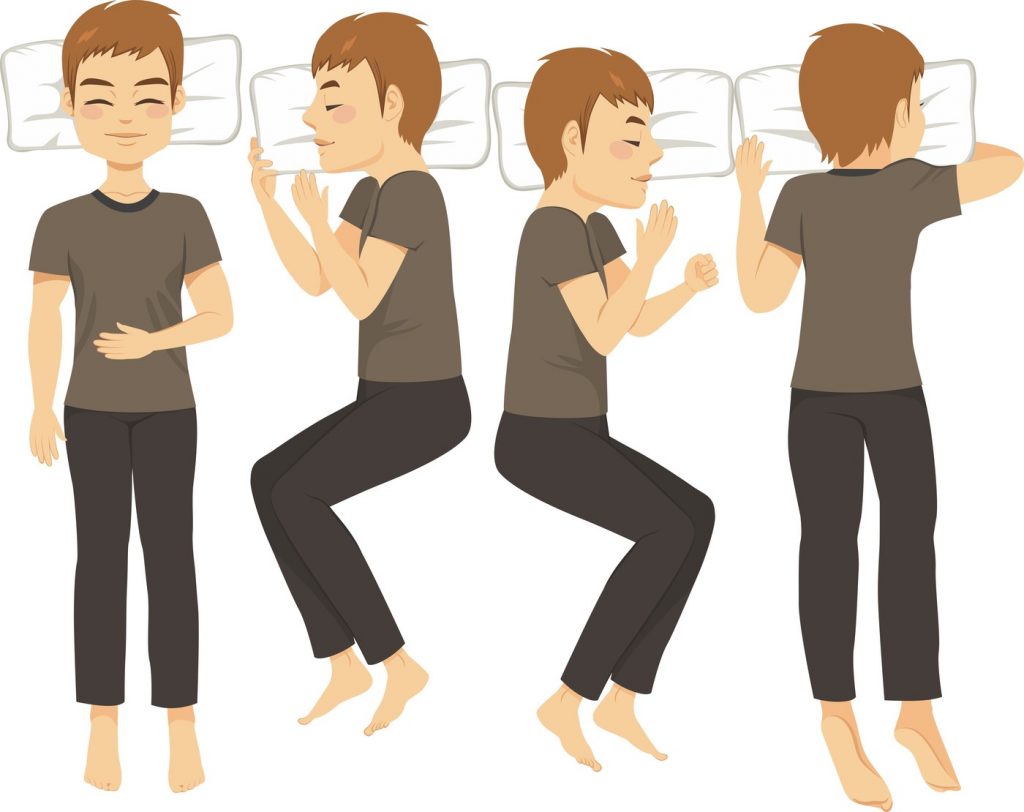
Which position do you take while sleeping? It’s crucial that you’re aware of this, as it will determine the firmness level of the mattress you’ll pick. Depending on your position and weight, you’ll have to choose between a firm and soft mattress.
Here’s a guide to help you find your most suitable comfort feel as per your sleeping posture.
Side
Whether you sleep on your left or right side, the firmness level of your preferred sleeping surface should either be soft or medium. It should be somewhere between a firmness level of 3 to 6/10 if you’re a side sleeper.
Sleeping on your side exposes more curves on your body. You’ll have the shoulders, back, and hip regions. All of them require even weight distribution and contouring to prevent pressure build up.
A bed offering a comfort feel of between 3 and 6 provides a more comfortable sleeping surface for side sleepers. It’s because it will be soft enough to contour to the curves but also sturdy for the needed support.
Side sleepers need a sleeping surface that will allow for excellent spinal alignment. It’s a challenge that comes with sleeping in this posture. A lot of times, you’ll find that side sleepers suffer from a backache or a painful spine as a result of poor alignment when sleeping.
As you receive pressure relief, ensure that you’re also getting the right amount of spinal support. Sleeping on a very firm or too soft mattress is most likely to have an effect of reduced spinal alignment. That’s why a firmness level of 3 to 6 is more appropriate for side sleepers.
Apart from poor spinal support, the neck, shoulder, hip or back pain are some of the other problems that you might develop should you sleep on a bed that doesn’t offer the right amount of comfort. Be careful as a side sleeper, ensuring that the sleeping surface molds to the various curves for sufficient support and comfort.
Are you a side sleeper?
See more: Most Recommended Side Sleeping Mattresses.
Back
Back and side sleepers are not far apart when it comes to choosing the most suitable firmness feel. We have found that mattresses with a firmness rating of around 4 to 7/10 work perfectly for sleeping on your back. Although we didn’t mention this in the previous section – Side Sleeping, we tend to feel firmness differently, based on the shape of our bodies and the weight. A mattress is categorized based on popular opinion.
For back sleepers, a firm bed would be suitable. Unlike side sleepers, they have fewer curves exposed but require a lot of back support. It’s especially crucial for spinal alignment and support.
Persons suffering from back pain are always advised to go for a firm surface. It’s because it’s highly recommended for back sleepers, and provides the much-needed back and spinal support.
Since support is critical for back sleepers, you’ll find that a bed that’s too soft may not offer the needed push back. In turn, pressure points start to form which in the long run lead to sore spots.
So what should back sleepers look for?
A mattress soft enough to contour to the curves for even weight distribution, creating pressure relief. It should also be firm enough to provide the required support. That’s why a rating of 4 to 7/10 is ideal. It should also allow for spinal alignment and support. A poorly supported spine leads to prolonged backache.
*Note, out of ten, we have assumed 1 to be soft while 10 is firm.
Stomach
Unlike side and back sleepers, stomach sleepers have to worry about getting pressure relief when sleeping rarely. Most of the pressure exerted on the bed will come from the torso region. Therefore, an ideal surface should offer even weight distribution creating equal support across the body.
If you sleep on the stomach position, we recommend getting bedding that has a firmness rating level of 5 to 7/10. In this category, you’ll most likely find those who prefer the extremes and will go for either a comfortable feel of 4/10 or in some cases 8/10. The extreme firmness levels are a result of body weight. Some weights are greatly supported on such surfaces.
Although pressure relief may not be a major concern, stomach sleepers are at a higher risk of hurting their back and spine. It is for this reason that they should be more cautious when choosing a mattress.
The stomach position already exposes you to a lot of risks, and getting a wrong bed makes it even worse. If you sleep in this posture, go for a bed that will provide adequate support for the hips, and shoulders. If the hips are not well supported, your back and spine will develop complications because of the pressure created.
To safely sleep in the stomach position, it may be necessary to add a body pillow under the belly region for extra support. However, be cautious while placing the pillow. Incorrectly placing it could lead to more complications.
Types of Material
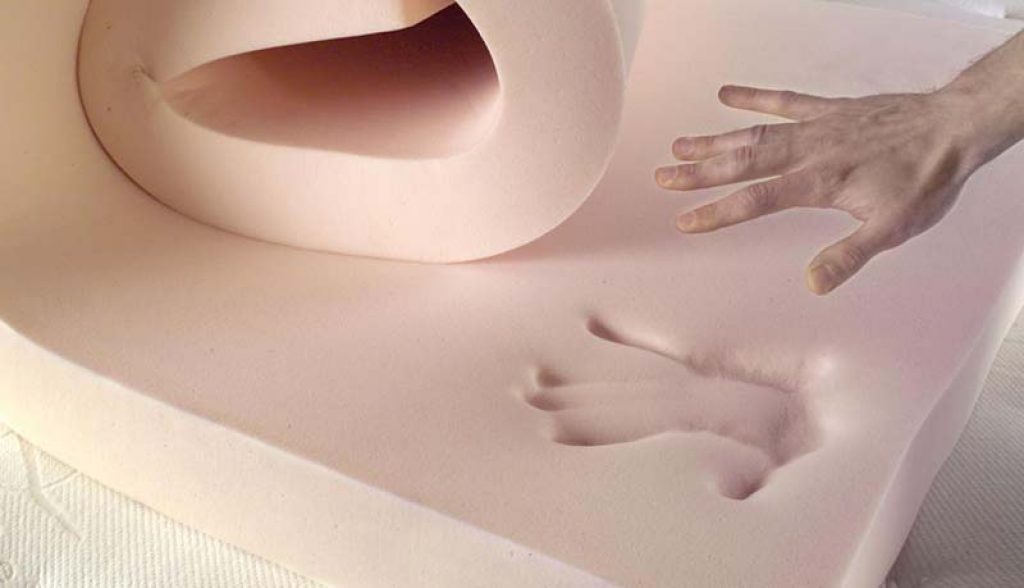
They are a variety of materials that can be used to make mattresses. They include foam, spring, latex, air, and water among others. We’ll focus on some five materials commonly found used in beds today.
Memory Foam
Memory foam was first used by NASA in 1966. It was used for cushioning because of its viscoelastic properties. It went commercial in the early 1990s, rolling its use to other industries such as mattress making.
Viscoelastic simply refers to its ability to contour to your body shape when you’re on the bed and retain its original shape once you get off.
The first memory foam constructed mattress was introduced to the market in 1991. Though, it’s not the same quality that you’ll find today. There are different types of memory foam because they’ve had to do some advancements.
Memory is known for getting hot when you’re sleeping and having poor edge support. Therefore, brands have tried to make some improvements on the foam to make it even more comfortable and supportive.
Numerous benefits come with sleeping on a memory bed, and they include;
- Proper spinal support and alignment
- Gives the ‘sinking in’ feel
- Ideal for individuals seeking pressure relief
- Works great with adjustable beds
- Offers resistance to dust mites
- They are great for sharing because of their ability to isolate motion significantly
If you’re looking for hug, pressure relief, contour including support and comfort; memory foam is an excellent alternative. Although all sleepers will find it comfortable, side sleepers are the ones likely to benefit more.
Looking for this type of material?
See our: Our Highest Rated Memory Foam Mattresses.
Latex

Memory foam and latex share some similarities, in that, they both offer pressure relief and some great contouring as you sleep. However, memory foam is slightly different because it has more sink and tends to sleep hot.
Latex will conform to your body shape, but it will not have as much hug and sink. It has more bounce ensuring you stay ‘on’ rather than ‘in’ the bed. In fact, opting to go for memory over latex and vice versa is a matter of preference as they both give similar benefits with some slight variations.
The one advantage latex has, and why most people prefer it is that it can stay cool. It makes latex among the top preferred because of its thermoregulation features especially for those who tend to sleep hot.
There’s natural and synthetic latex. Natural is from rubber tree sap and ideal for organic bedding. Synthetic latex, on the other hand, is manufactured. There are two ways latex gets processed, and they are:
- Dunlop – Has an uneven feel, with a soft top and a denser bottom.
- Talalay – Even density and offers a consistent feel.
Therefore, go for latex if you want a cool sleeping surface that has some bounce.
Gel
Memory foam’s major challenge is that it starts to get hot as you’re sleeping. The result is sagginess and a hug feel. Sagging creates uneven weight distribution causing pressure spots to form. They contribute to the increased temperature.
To solve the problem, some brands have infused cooling gel to the memory to enhance the cooling effect. The cooling gel will absorb the heat from your body, wicking it away to the gel-infused foam to help you stay cool.
We find that it’s vital to mention that it’s not only cooling gel that is being used. Companies are using a copper infusion, and this is why;
- Copper offers health benefits such improved blood flow and detoxification
- Perfect for rejuvenation especially individuals leading an active lifestyle like athletes
- Helps speed up the healing of injuries
- Provides thermoregulation properties
The above are among the long list of benefits that come with sleeping on a copper-infused bedding. The cooling gel other than heat regulation increases the amount of pressure relief you’ll get while sleeping.
We found that the gel in some mattresses took time to respond to the heat. You may end up feeling hot for some time, but eventually, it will keep you fresh.
Spring
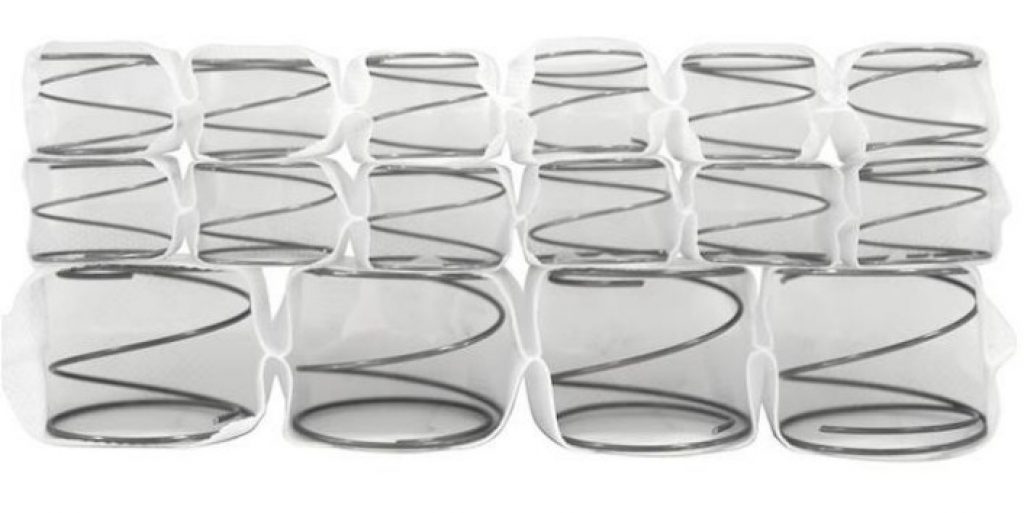
Surveys have shown that innerspring is the most preferred bedding choice for the majority. We attribute this to its long-term existence. Coil or spring mattresses were first introduced to the market sometime in the early 1900s.
Since we tend to pick a bed based on what we are used to, we found that a lot of people chose spring as it’s what they are used to. However, we must acknowledge that the trend is changing and people are becoming more open to other materials like memory and latex foam.
To top preference, they are also quite affordable when compared to other types of bed. They have some disadvantages which include fast wear and tear.
There are different types of spring, and we have highlighted them;
- Bonnell – The first type of coils ever used, they are averagely priced.
- Continuous Coils – Have more durability and are affordable.
- Offset – Strong, durable, less noisy, and supportive.
- Pocketed Coils – The higher the number of coils used the cozier it gets.
- Marshall Coils – Similar to the pocketed coils. They offer more support and are great in motion isolation. They are independently wrapped/encased coils.
Spring is an excellent alternative when you want good bounce, to sleep cool, the spring feels and firm edge support.
Hybrid
They are among the popular choices. We found that it’s because they have been engineered to offer the best of memory/latex foam and innerspring. The hybrid combines the soft nature of foam and the bounce and support of spring for a fantastic sleeping experience.
The majority of spring mattresses have the following structure:
- 2 to 3 layers of foam, either latex or memory
- Beneath the top layers, we have the spring layer
- The bottom layer is in most cases a layer of thick high-density poly foam
It’s easier with a hybrid to get you preferred comfort feel. It offers the right amount of spring and foam feel ideal for a custom sleeping surface. You’ll always be spoilt for choice, as some hybrid making brands design and create high-quality bedding.
What makes hybrid perfect is the ability to enhance support, and the comfort feel that you get to enjoy while at the same time minimizing the disadvantages.
A good hybrid should be able to deliver pressure relief from the foam, bounce, and support from the spring and excellent cooling thanks to the gel infusion in the foam and coils offering ventilation. You’ll find some foams have a copper infusion which provides more benefits health and sleep wise.
Picking the Right Mattress Size
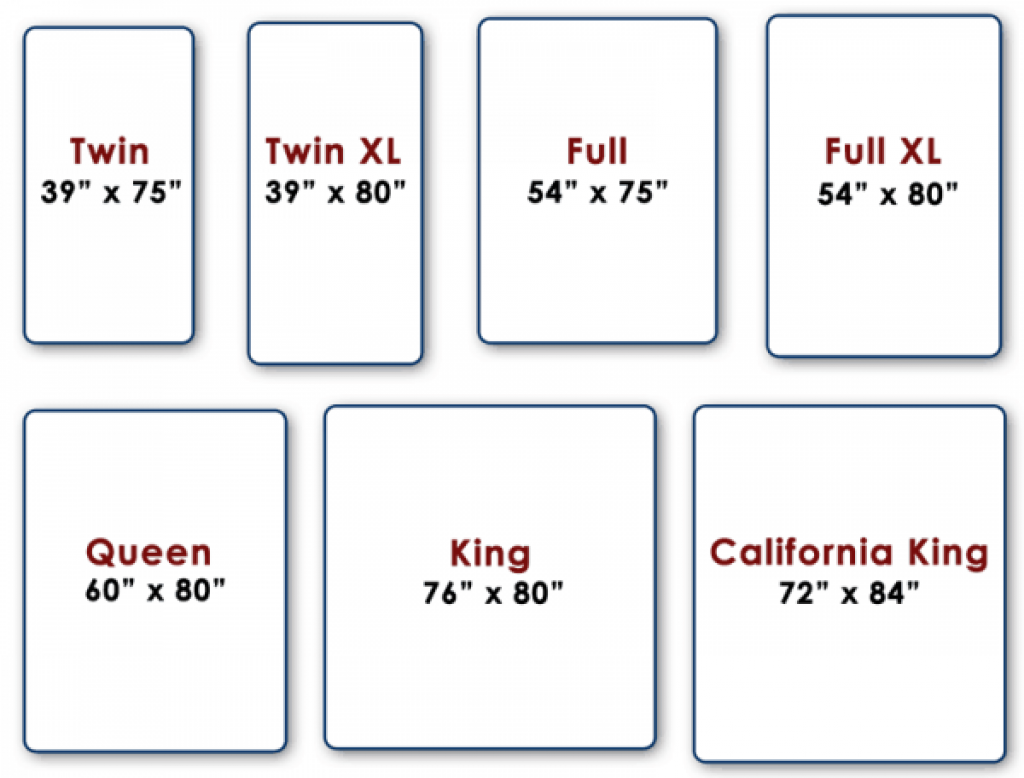
The mattress size is like the firmness feel and materials is crucial in informing the choice that you’ll make during bed buying. There is a range of factors that assist in picking the size which include:
- The room size – A spacious room works well with a spacious bed and vice versa.
- The person who will be using it – Small children and teens will use a different size, mostly smaller when compared to adults.
- The comfort you’re searching for – The roomier the sleeping surface, the cozier it is.
According to the above, you’ll choose among the following sizes. We have discussed under each size where it would be best used.
Cal King
California King Size: 72″ Width x 84″ Length
*Note: The sizes may vary slightly depending on the manufacturer.
The Cal king is 4” longer than the King, which is also a 4” inches wider than the Cal King.
The California King Size offers extra sleeping space for sleeping. It’s ideal for taller individuals.
It’s an excellent choice when you’re looking for an adjustable bed; this is because there’s enough space for elevation. The Cal king has enough room for a third person. Couples and parents will find it more accommodative. For parents, they can have their children including the pet and still get to be comfortable.
These are the room sizes we recommend and which can comfortably fit a Cal King sized mattress; any space measuring between 12’ by 12’ and 14’ by 12’. You’ll have freedom of determining the walk around space you’ll find ideal.
King
King Size: 76″ Width x 80″ Length
The King and Queen both have a similar length with the difference being the width. The King is 16” wider. There’s more sleeping room, and it’s especially good for couples.
There’s more sleeping room on this bed. It’s like 2 Twin XL beds combined. Couples will enjoy the king because it provides more sleeping surface to be comfortable, and relax. They can stretch as much as they want.
For single sleepers, the possibilities are endless. You can sleep in any direction you chose and still get to enjoy the comfort and support offered. We recommend it to adults rather than children, unless you’re an adult and expect your child to sleep with you occasionally.
It occupies quite a substantial amount of room space. We suggest using the king in rooms measuring as from 10’ by 12’ to 13’ by 13’.
Want to learn more about King mattress?
See our: Our Top Quality King Size Mattresses.
Queen
Queen Size: 60″ Width x 80″ Length
The queen is the next size after the Full size, perfect for individuals and couples looking to have some extra sleeping space.
It’s the most preferred size across the globe, as they are spacious enough providing sleeping space. They also get to fit in rooms perfectly. For couples, it’s the best alternative as they still get to sleep comfy, have enough room and cuddle. There’s enough room to have your pet or kids over from time to time.
Single sleepers who want more space to move around can buy the queen. It’s also ideal for guest rooms and teenagers.
The following rooms would perfectly fit a queen sized bed; it will depend on the walk around space you’ll want;
- 10’ x 10’
- 10’ x 11’
- 10’ x 12’
- 10’ x 13’
- 10’ x 14’
Are you in the market for a Queen bed?
See our: Our Top Rated Queen Beds.
Twin
Twin Size: 39″ Width x 74″ Length
The twin bed is ideal for small rooms, as bunk beds or couples looking to share a room rather than a bed. They can also be suitable as guest beds.
It works well for young children because it offers sufficient sleeping space and still leaves enough playing room and for storing toys and other stuff. You’ll also find that because your child or teen is in their growing stage, you’ll have to buy a new bed frequently.
They work well for small rooms, such as apartments, guest rooms, and dorms. It’s because they don’t occupy a lot of room space and will offer sufficient support and comfort. They are suitable for single sleepers.
Some couples will have trouble sharing the bed because they both prefer different firmness levels. In such cases, they can buy two twins each with their desired comfort level and combine to make one bed. You still get to share, but you’ll both be sleeping on a surface with firmness preferable to you.
Full
Full Size: 54″ Width x 74″ Length
It’s 16″ wider than the twin but has the same height. Like the twin, it’s also perfect for children and teenagers. In particular, it benefits teens outgrowing the twin bed. For kids, it’s great if you love cuddling your kids while tucking them in. Otherwise, the twin is great. Plus, more space offers more comfort.
It will fit in a room with some space. Not too spacious or small. A 10’ by 12’ sized place would be ideal.
It can be suitable to sleep alone or with a partner. However, when sleeping two, there are factors that you’ll have to consider for a good night’s rest;
- There’s your body size – If you both have some weight, then go for bigger space. A Full sized bed may not offer sufficient sleeping space.
- Motion transfer – If one of the partners’ tends to move around a lot in their sleep, chances are they will affect the other persons’ quality of sleep. Therefore, go for a bigger space on a material that limits motion transfer.
Our Final Thoughts
With every detail that we have discussed on when to buy, the type of material, firmness feel and size of a mattress, it’s merely meant as a guide. We have different needs and preferences when it comes to mattress buying.
We have varied sleep habits which dictate what type of bed would offer an amazing sleeping experience. The moment you understand what sleeping surface provides with quality sleep, then picking out a mattress will not be a challenge.
The information presented in this guide is meant to help you purchase the ideal mattress for you this year.


